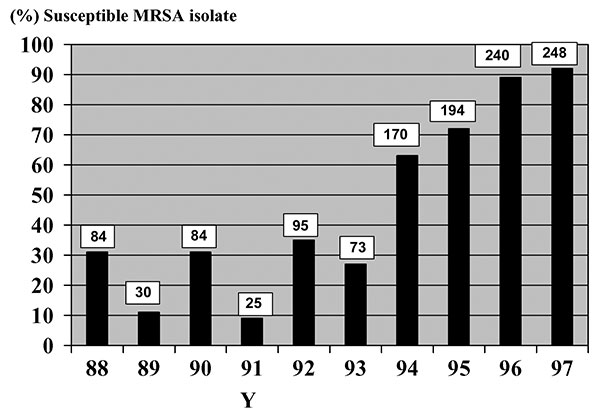Volume 9, Number 9—September 2003
Dispatch
Co-trimoxazole–Sensitive, Methicillin-Resistant Staphylococcus aureus, Israel, 1988–1997
Figure

Figure. Co-trimoxazole susceptibility among methicillin-resistant Staphylococcus aureus. Columns indicate percentage of hospital-acquired methicillin-resistant Staphylococcus aureus (MRSA) susceptible to co-trimoxazole. Numbers on top of the columns are absolute numbers of hospital-acquired MRSA susceptible to co-trimoxazole.
Page created: January 03, 2011
Page updated: January 03, 2011
Page reviewed: January 03, 2011
The conclusions, findings, and opinions expressed by authors contributing to this journal do not necessarily reflect the official position of the U.S. Department of Health and Human Services, the Public Health Service, the Centers for Disease Control and Prevention, or the authors' affiliated institutions. Use of trade names is for identification only and does not imply endorsement by any of the groups named above.